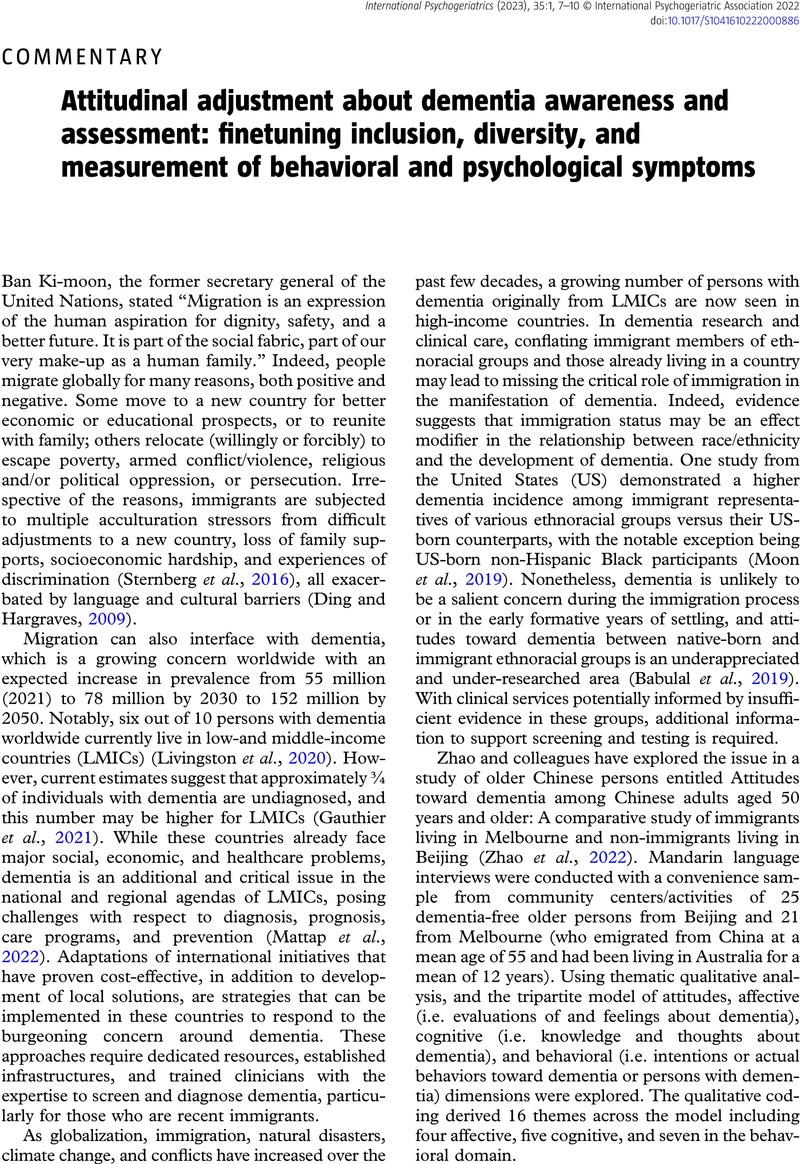Crossref Citations
This article has been cited by the following publications. This list is generated based on data provided by Crossref.
Giannopoulou, Panagiota
Vrahatis, Aristidis G.
Papalaskari, Mary-Angela
and
Vlamos, Panagiotis
2023.
The RODI mHealth app Insight: Machine-Learning-Driven Identification of Digital Indicators for Neurodegenerative Disorder Detection.
Healthcare,
Vol. 11,
Issue. 22,
p.
2985.
Zhu, Yiqi
Park, Soobin
Kolady, Ramana
Zha, Wenqing
Ma, Ying
Dias, Amanda
McGuire, Katherine
Hardi, Angela
Lin, Sunny
Ismail, Zahinoor
Adkins‐Jackson, Paris B.
Trani, Jean‐Francois
and
Babulal, Ganesh M.
2024.
A systematic review/meta‐analysis of prevalence and incidence rates illustrates systemic underrepresentation of individuals racialized as Asian and/or Asian‐American in ADRD research.
Alzheimer's & Dementia,
Vol. 20,
Issue. 6,
p.
4315.
Ruthirakuhan, Myuri
Guan, Dylan X.
Mortby, Moyra
Gatchel, Jennifer
and
Babulal, Ganesh M.
2025.
Updates and future perspectives on neuropsychiatric symptoms in Alzheimer's disease.
Alzheimer's & Dementia,
Vol. 21,
Issue. 3,



